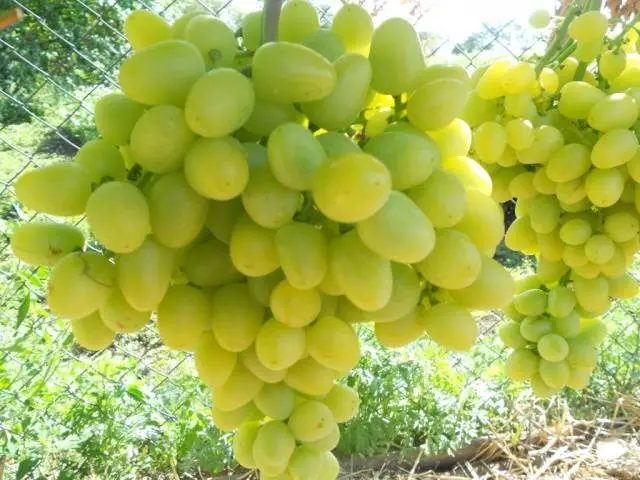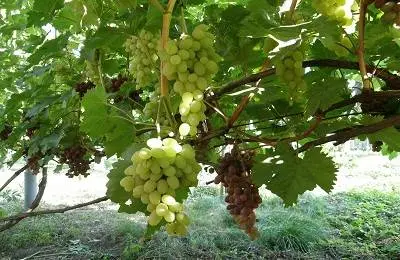Contents
This hybrid grape variety has many names. Originally from Bulgaria, we know him as Phenomenon or Augustine. You can also meet the numbered name – V 25/20. Its parents are the varieties Villar-blanc and Pleven, which is why it is sometimes called Steady Pleven. From Pleven, he took resistance to diseases, and Villard Blanc gave resistance to adverse conditions.
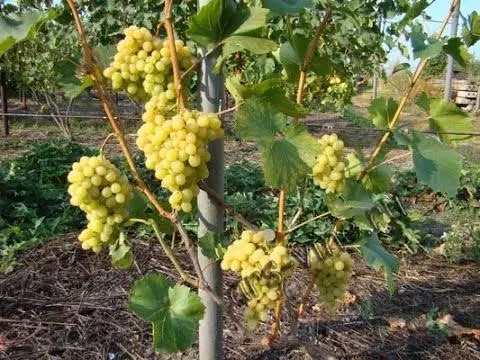
Characteristic of the variety
To find out why it is good, let’s take a closer look at the description of the Augustine grape variety.
- it is a table form of grapes;
- has a considerable bunch weighing up to 800 g, and with good care and much more;

- bunch loose, moderately dense, sometimes with a wing. This structure of the clusters contributes to their ventilation, and, therefore, reduces the likelihood of diseases. Clusters are not subject to pea, the berries are the same size;
- the weight of the berry is average – up to 8 g; in the middle lane and Siberia, such berries can also be called large. There are up to 6 seeds in them, the skin is not hard, it is easily eaten;
- the berry is elongated-oval in shape and has a beautiful amber-yellow color, has a pleasant aroma, accumulates a lot of sugar in any weather – up to 20%, the berries are well transported without losing commercial qualities;
- the taste of the berries is simple, but harmonious without a nutmeg shade;
- the red-brown vine has a great growth force, so it can be used in the gazebo culture. The leaf is beautiful, almost not dissected, its shape is close to round;

- Augustine is prone to crop overload, so the number of brushes must be normalized, leaving no more than one to escape;
- withstands frosts down to -24 degrees, but not for a long time, so it is better not to leave it without shelter for the winter;
- Augustine grapes ripen early, from flowering to ripening it should take from 115 to 120 days, therefore, with early onset of heat in spring, it can be harvested as early as August;
- brushes can wait up to 2 weeks to be harvested after maturation without losing their consumer qualities.
Winegrowers often refer to the Augustine grape variety as the “workhorse”. And for good reason. Unpretentiousness, resistance to major grape diseases and simply amazing yields (in private farms – up to 60 kg per bush) make this variety a welcome guest in any vineyard. And if we add to this the pleasant taste of sweet berries, good ripening of the vine, excellent survival of seedlings and excellent rooting of cuttings, it is clear that he will have few competitors.
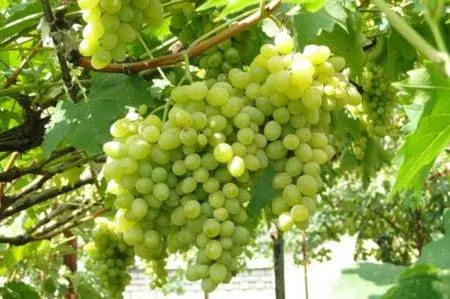
The characterization and description of the Augustine grape variety would be incomplete without mentioning its shortcomings:
- with prolonged high humidity, the berries are able to crack;
- the bones in the berries are quite large;
- since the variety is table, it is not very suitable for making fruit and berry wine;
- it is not recommended to keep clusters on the bushes for more than 15 days, otherwise the berries will begin to crumble.
These shortcomings do not prevent winegrowers from successfully growing the Augustin grape variety in vineyards located in far from southern conditions, their reviews of this variety are the best.
To have a complete picture of Augustine, let’s look at his photo.

In order for the Phenomenon to show all that it is capable of, you need to plant it correctly, cut and pinch it in time, fertilize, in a word, follow all the necessary rules of agricultural technology. Let’s consider everything in order.
Reproduction
Any method will work for him. If you want to get a crop faster, buy a ready-made two-year-old Augustine grape seedling.
Cuttings from annual shoots can be rooted or grafted onto the selected stock. This method is quite cheap and easy with experience.
For mass grafting and rooting of cuttings, it is better to use a special stalk with heating in the lower part.
You can sow grape seeds after two months of stratification. The best time for sowing in the middle lane is the first decade of June.
Seedlings obtained from seeds are better adapted to environmental conditions, but most often do not repeat parental qualities.
If you already have one Phenomenon bush and want to propagate it, this is easy to do by digging a side shoot in the spring. By next spring, it will be ready for independent vegetation.
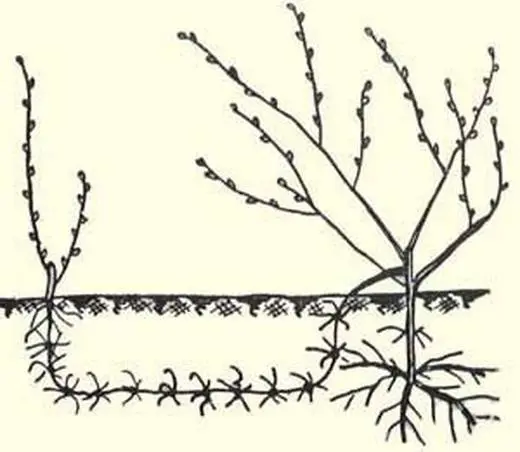
Landing
Augustine grapes love fairly fertile and moist soils. The site should be illuminated by the sun throughout the day, even a slight shading will affect both the yield and the ripening time.
In grapes, nutrition is provided by heel roots, dewy superficial roots are also important, but in harsh winters they can easily die, so grape pits should be at least 80 cm deep. Don’t get too carried away with fertilizers. Enough two buckets of fertile soil, mixed with 300 grams of superphosphate and the same amount of potassium salt.

If a seedling is planted, it is impossible to deepen the root collar; it is better to plant a rooted cutting deeper so that the heel roots are inaccessible to frost.
When planting, dig a piece of asbestos pipe of small diameter next to the bush – it is convenient to feed the grapes through it, provided that it is dug deep enough.
The planted plant needs to be watered and do this every week until it takes root, especially in dry weather.
Feeding
In the first year, Augustine grapes have enough nutrition that he received when planting. Only in autumn, the bush should be sprinkled at the base with a layer of humus 20 cm thick. The purpose of this procedure is twofold: it is both good warming for the roots in winter, and top dressing, which begins to act in early spring.
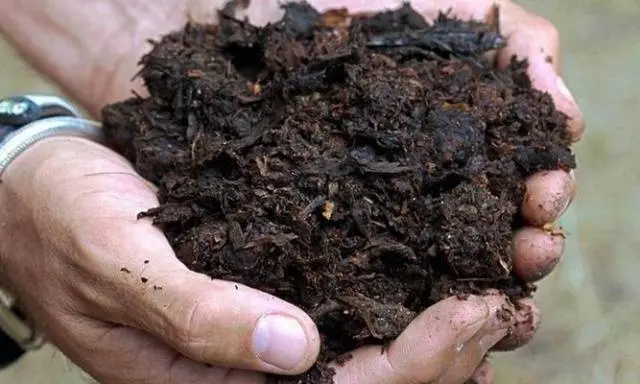
Subsequently, Augustine grapes are fed three times per season: in the spring with a predominance of nitrogen, a couple of weeks before flowering with a predominance of superphosphate, and with the beginning of the ripening of berries – only potash and phosphorus fertilizer. Application rates are always indicated on the fertilizer packaging. Grapes Augustine responds gratefully to foliar fertilizing with complex fertilizers with microelements.
Watering
Grapes of the Augustine variety are quite drought tolerant, but still need watering, especially if there has not been rain for a long time. Watering rates depend on the age of the bush and the type of soil. The greatest need for moisture in grapes during spring growth and flowering.
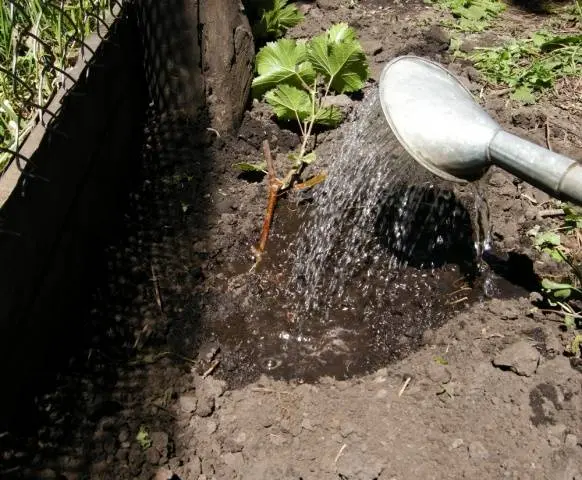
Shrub formation
Without this procedure, you can get a huge number of shoots and a meager harvest. To prevent this from happening, you need to follow the rules of formation at all stages of the growing season of grapes.
In the first year after planting, the bushes do not form so that they grow enough shoots for overwintering.
In the future, the bush is formed according to the chosen scheme, taking into account that the Augustine vine must be cut in the fall, keeping from 6 to 12 eyes. Their number depends on the chosen scheme of formation.
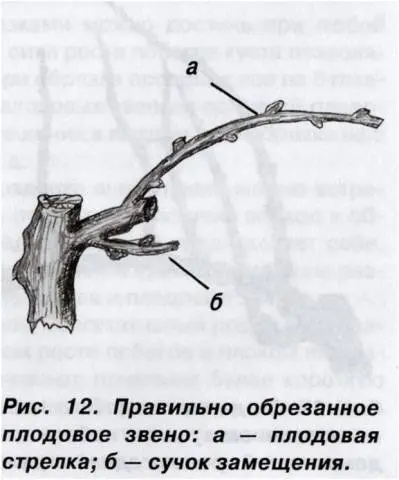
In summer, the formation is reduced to pinching stepchildren. Since Phenomenon grapes are rich in yield, 5-6 leaves should be left above each brush. Stepsons of the second order are best removed so as not to thicken the bush. At the end of summer, chasing of shoots is performed, that is, pinching their tops for better ripening of the vine.
Pruning grapes should be approached creatively, taking into account the characteristics of each bush.
Shelter of grape bushes for the winter
Where winters are frosty, this technique is indispensable. There are many ways to hide, each grower chooses for himself the most convenient and effective. It is important that under the shelter it is not only warm, but also dry, then the grapes will not fade.
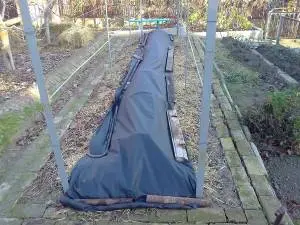
Augustine grapes are an excellent choice for those who are just starting to engage in such an exciting activity as viticulture, because experienced growers already have at least one bush of this beautiful variety.










